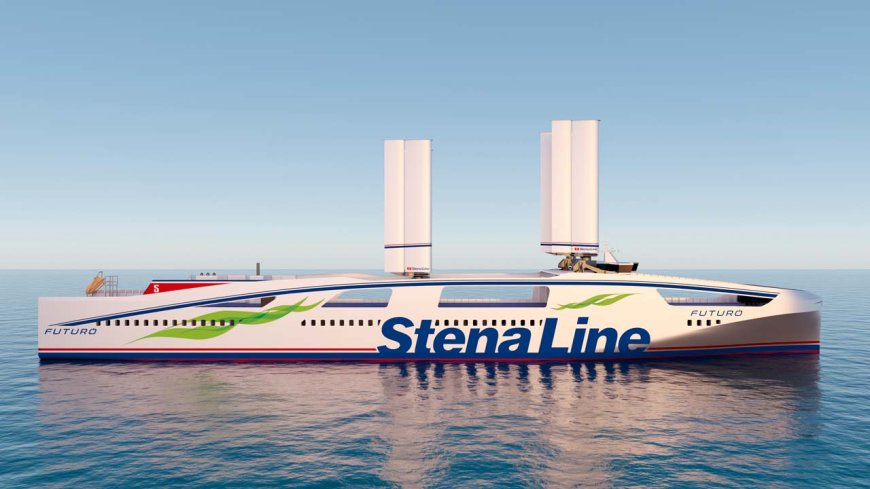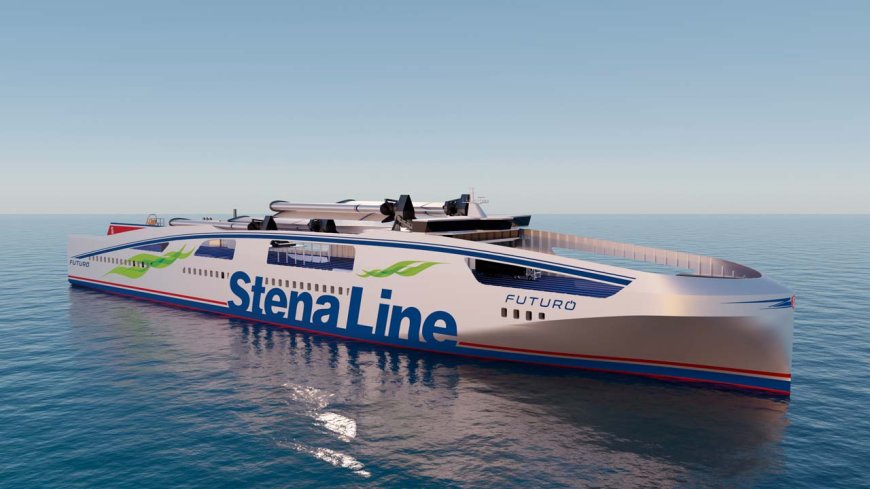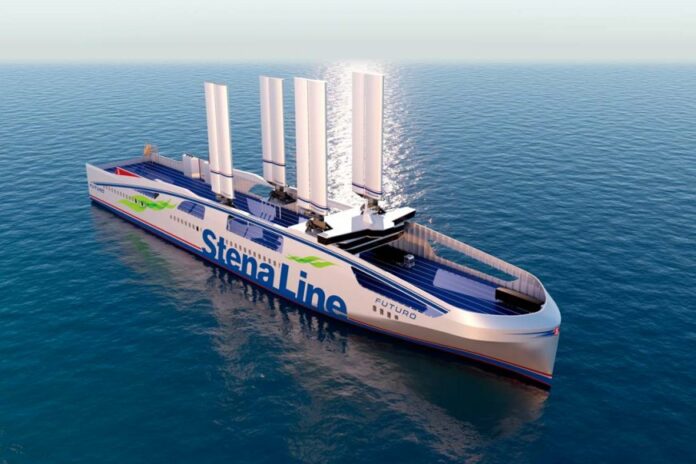One of Stena Line’s central goals is to reduce CO₂ emissions by 30 percent by 2030. The path to this goal involves a range of activities across many areas, not least the decarbonization of the vessel fleet. This is being done both by improving the efficiency of the existing fleet and by developing a new generation of vessels with optimized features and new technologies.
Stena Line’s latest concept for the new generation of vessels is Stena Futuro, a 240-meter-long RoRo vessel intended for transporting semi-trailers and cars.
“The mission is to develop the most efficient and competitive vessel possible for a specific cargo capacity, using today’s available technology. The goal is for the vessel to have the lowest fuel consumption on the market,” says Nicolas Bathfield, Project Manager at Stena Teknik, who has been involved in developing the concept.
The hull and superstructure have been optimized to achieve the most efficient use of cargo space possible. At the same time, low weight and optimized hydro- and aerodynamics are central to achieving low fuel consumption. Stena Futuro’s low and streamlined design is a result of these ambitions.

In addition to the vessel’s design, Stena Futuro will be equipped with technology to limit its environmental footprint. The vessel will have hybrid propulsion, batteries and engines with low fuel consumption that can run on several different fuels. The battery system makes it ready to partly operate the vessel on electricity alone, for example, when entering and leaving ports. Solar panels will also contribute to the ship’s electricity needs.
The hull of Stena Futuro will also be equipped with an air lubrication system, where small air bubbles are released beneath the waterline to reduce friction between the vessel and the water. A waste heat recovery system will make it possible to reuse the hot exhaust gases from the ship’s engines to meet other onboard heating needs as well as supporting electric power generation.
The developed concept for Stena Futuro also includes four 40-meter-tall wing sails, which can be retracted when needed — for example, when passing under a bridge. Recently, Stena’s developers, together with the Swedish research institute RISE, have conducted tests and simulations of the sails’ usage to document both energy savings and how the sails affect the ship’s maneuverability and safety.

“The tests showed that Stena Futuro’s sails could potentially result in as much as 15 percent fuel savings. We also confirmed that the vessel meets all requirements for stability and maneuverability in scenarios such as sudden wind shifts or quick course changes,” says Nicolas Bathfield.
The ship design will play a vital part for Stena Lines future tonnage planning the coming years. Currently, there is no finalized plan for the production of Stena Futuro.
“We aim to help lead our industry in achieving the global climate goals. We work toward this every day in our ongoing operations, but we also need to be at the forefront in developing tomorrow’s vessels. The Stena Futuro concept is an important step in that direction,” says Niclas Mårtensson, CEO of Stena Line.


